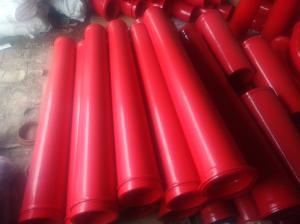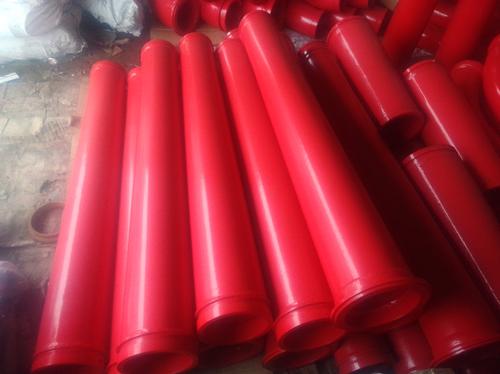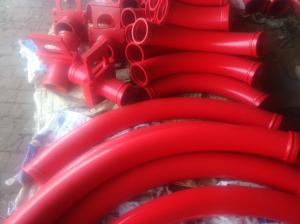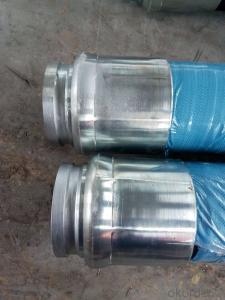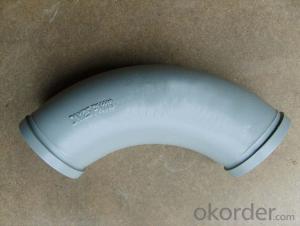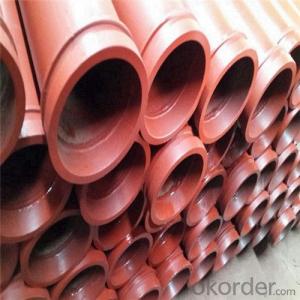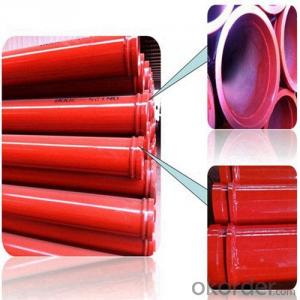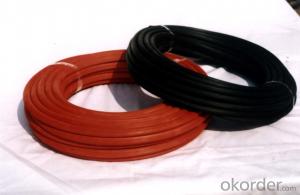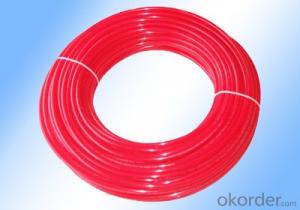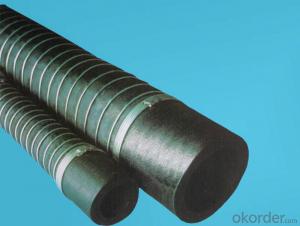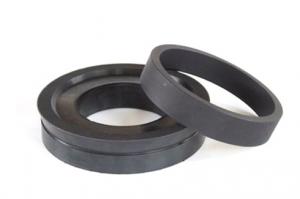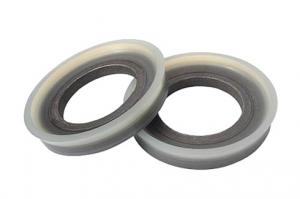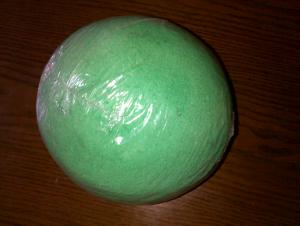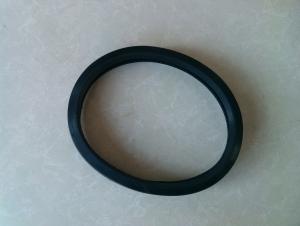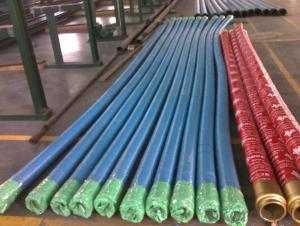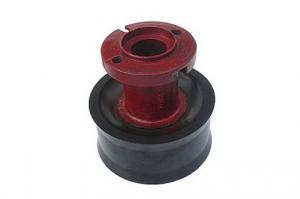Concrete Pump Reducer Pipe Red with Good Quality
- Loading Port:
- Tianjin
- Payment Terms:
- TT or LC
- Min Order Qty:
- 10 pc
- Supply Capability:
- 10000 pc/month
OKorder Service Pledge
OKorder Financial Service
You Might Also Like
Product Description:
Product Name: Concrete Pump Reducer Pipe
1. Specification
Materials: ST52
Concrete Pumping Capacity: 15,000-20, 000m3;
Inner Diameter: DN150-DN125mm
Outer Diameter: 133mm, 140mm etc.
Thickness: 4mm, 4.5mm, 7mm, 10mm
Flange size: 148mm or 175mm or 156mm
Flange type: SK flange, ZX flange, M/F flange
Standards: ASTM A128-C
Surface treatment: Painting, Baking Finish
Notes: Total series of Delivery Pipe for different brand concrete pump (PUTZMEISTER, SCHWING, CIFA, SANY, ZOOMLION, IHI, KYOKUTO Etc)available from us, different length, different raw material pipe for customers choices.
2. Application
Widely used on concrete pump truck, concrete placing boom, trailer concrete pump etc, for concrete delivery.
Our concrete pump delivery pipes have been successfully exported to many countries from 1998, Our main markets as below: Middle East, Southeast Asia, America, Brazil, Italy, Russia, South Africa etc
Aiming at the largest concrete pump parts manufacturer, and reliable, professional supplier in China, we can supply concrete pump elbows, delivery pipes, casting or forging couplings, end rubber hoses, rubber pistons, tungsten wear plates, delivery cylinders, and other hydraulic parts, one stop service for your concrete pump parts and accessory business.
3. Package and Delivery
1. All the pipes directly put into one 20feet or 40feet containers.
2. 10pcs of pipes as one bundle put into one 20feet or 40feet containers.
4. Production of Concrete Pump Reducer Pipe DN150-DN125 300MM
Our Concrete Pump Pipes are made with advanced technology of Precision cutting, Automatic Flange Welding, Heat Treatment, Polishing, and Painting or Baking, Etc.
5. Primary Competitive Advantages
1) Brand-name Parts
2) Country of Origin
3) Competitive Price
4) Good Product Performance
5) Prompt Delivery
6) Quality Approvals
7) Good Reputation
8) Expedite Communication
9) Good Packaging
10) Distributorships Offered
11) One Step Service
12) Good Quality Service
13) Small Orders Accepted
14) Overseas Service Branches
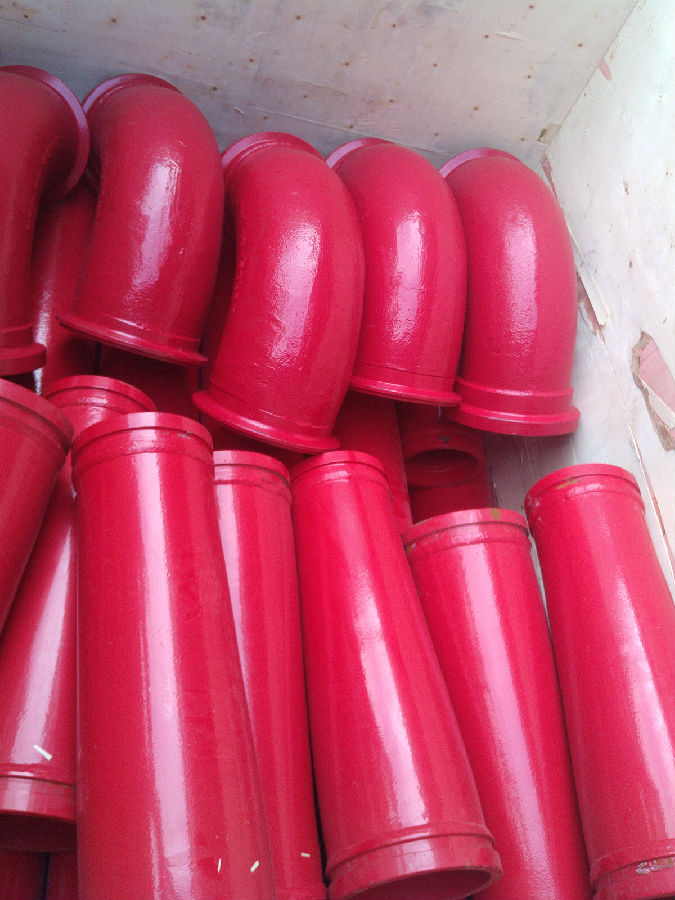
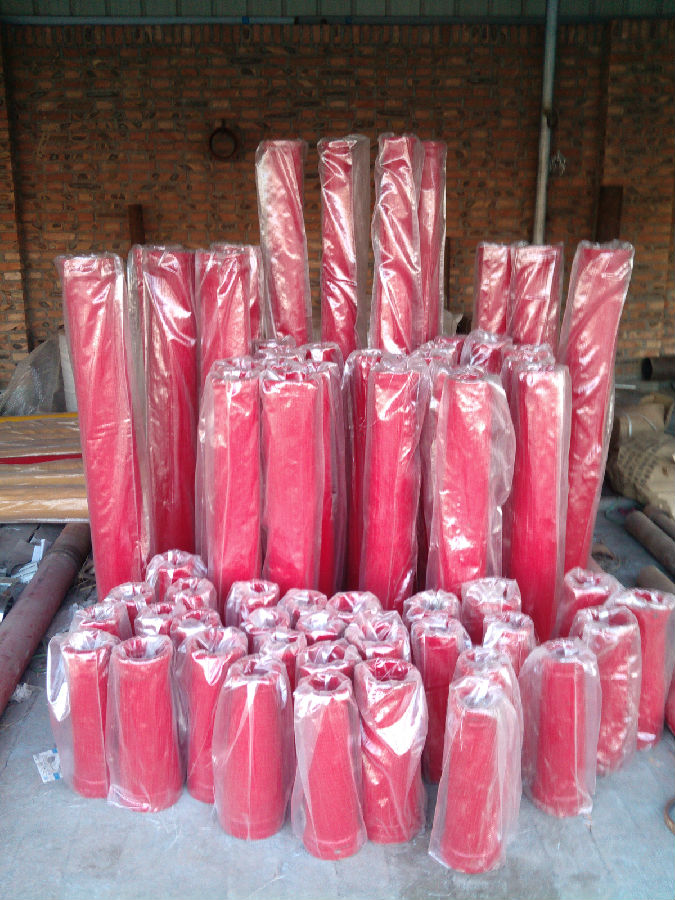
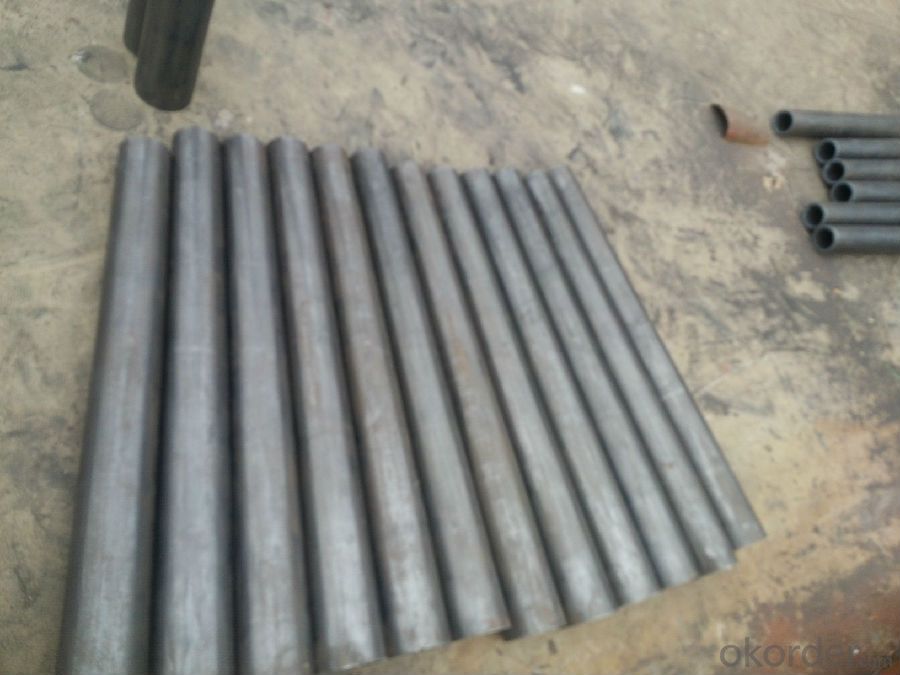
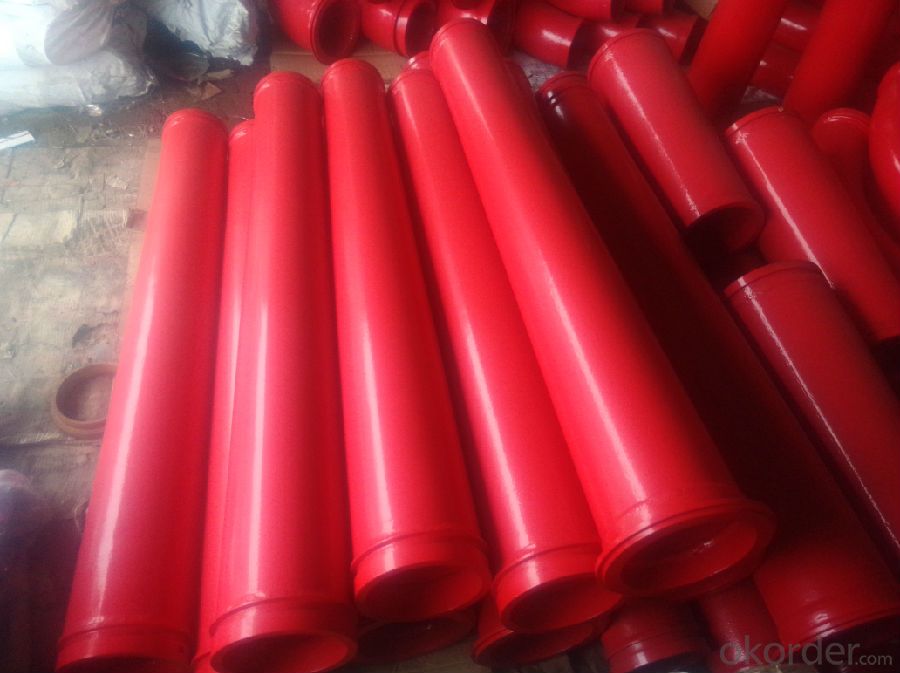
- Q: Are there any specific guidelines for the disposal of old or damaged concrete pump spare parts?
- Yes, there are specific guidelines for the disposal of old or damaged concrete pump spare parts. It is recommended to contact local waste management authorities or recycling facilities to inquire about proper disposal methods. In many cases, recycling concrete pump spare parts is encouraged to reduce environmental impact.
- Q: How long does it take to receive concrete pump spare parts after ordering?
- The time it takes to receive concrete pump spare parts after ordering can vary depending on various factors such as the supplier's location, shipping method chosen, and availability of the specific parts. It is recommended to contact the supplier directly for an estimated delivery timeline.
- Q: What is the purpose of a concrete pump control panel?
- The purpose of a concrete pump control panel is to provide operators with a centralized platform to control and monitor the various functions of a concrete pump. It allows them to adjust the pumping rate, control the direction and flow of the concrete, monitor the pressure levels, and ensure the safe and efficient operation of the machine.
- Q: What are the indications of a weak or dead remote control battery?
- The signs of a weak or dead battery in a remote control can vary depending on the type of remote control used. Nevertheless, there are some common signs to look out for. One of these signs is a noticeable decrease in the operating range or distance of the remote control. This means that you may need to be closer to the device you want to control for the remote to work properly. Another sign is when the remote control buttons become unresponsive or require multiple presses to function. Additionally, you may observe a delay in the response time of the device when using the remote control. In certain cases, the remote control may stop functioning altogether, indicating that the battery is completely dead. If you notice any of these signs, it is advisable to replace the battery in the remote control to ensure reliable performance.
- Q: Can concrete pump spare parts be customized according to specific requirements?
- Concrete pump spare parts can indeed be customized to meet specific requirements. Numerous manufacturers offer customization options to cater to the unique needs and preferences of their customers. This enables the creation of spare parts that are specially designed to perfectly fit and function with a particular concrete pump model or brand. Customization can involve alterations in dimensions, materials, finishes, and other specifications to guarantee compatibility and enhance performance. Additionally, customization can also be implemented to satisfy specific environmental or project demands, such as corrosion resistance or tolerance for extreme temperatures. Overall, the capacity to personalize concrete pump spare parts provides flexibility and ensures the efficient and effective operation of the equipment in diverse construction projects.
- Q: What is the importance of a concrete pump control valve?
- A concrete pump control valve is important because it allows for precise control and regulation of the flow rate and pressure of concrete being pumped. This ensures that the concrete is delivered accurately and efficiently to the desired location, preventing wastage and improving overall productivity of the construction process. Additionally, the control valve prevents blockages and potential damage to the pump by allowing operators to adjust the flow as needed, maintaining a smooth and continuous operation.
- Q: What is the purpose of a concrete pump piston?
- The purpose of a concrete pump piston is to pressurize and push the concrete mixture through a pipeline, enabling efficient and accurate placement of the concrete in construction projects.
- Q: How can one determine the correct weight and balance requirements for concrete pump spare parts?
- To determine the correct weight and balance requirements for concrete pump spare parts, several factors need to be considered. Firstly, it is important to consult the manufacturer's specifications and guidelines for the specific concrete pump model. These documents often provide detailed information about the weight and balance requirements for each spare part. Secondly, understanding the function and purpose of each spare part is crucial. Different parts have varying weights and may have an impact on the overall balance of the pump. For instance, larger components such as booms or outriggers may require specific weight distribution to ensure stability during operation. Furthermore, considering the intended use and conditions of the concrete pump is essential. If the pump is expected to work in challenging terrains or extreme weather conditions, additional weight may be required to enhance stability. In addition to the manufacturer's guidelines, consulting with experts or engineers familiar with concrete pumps can provide valuable insights. They can help analyze the specific requirements of the pump and advise on the correct weight and balance requirements for the spare parts. Lastly, it is crucial to conduct thorough testing and inspections after installing any spare parts. This ensures that the weight and balance requirements are met, and any adjustments can be made if necessary. Overall, determining the correct weight and balance requirements for concrete pump spare parts involves a combination of understanding manufacturer guidelines, considering the purpose and conditions of the pump, seeking expert advice, and conducting proper testing and inspections.
- Q: How can a faulty outrigger affect the stability of the pump?
- A faulty outrigger can significantly affect the stability of a pump. The outrigger is an essential component that helps to support and balance the pump during operation. It acts as a stabilizer and prevents the pump from tipping over or vibrating excessively. If the outrigger is faulty, it may not provide the necessary support and stability required for the pump to function properly. This can lead to various stability issues. For example, the pump may become more prone to tipping over, especially if it is subjected to uneven surfaces or strong vibrations. This can be extremely dangerous, especially if the pump is dealing with hazardous or flammable materials. Additionally, a faulty outrigger can cause the pump to vibrate excessively. Vibrations can lead to increased wear and tear on the pump, resulting in premature failure of critical components. Excessive vibrations can also cause damage to the surrounding infrastructure or equipment, leading to costly repairs or even accidents. Furthermore, a faulty outrigger can affect the accuracy and efficiency of the pump's operation. If the pump is not properly stabilized, it may not be able to maintain a consistent flow rate or pressure, affecting its performance. This can result in inefficiencies, increased energy consumption, and even reduced productivity. In conclusion, a faulty outrigger can have a detrimental impact on the stability of a pump. It can increase the risk of accidents, cause excessive vibrations, and affect the pump's performance and efficiency. Regular maintenance and inspections are crucial to ensure that the outrigger and other support systems are functioning correctly to maintain the stability and reliability of the pump.
- Q: How can a malfunctioning control panel affect the pump's operation?
- A malfunctioning control panel can have various negative impacts on the operation of a pump. Firstly, the control panel is responsible for monitoring and controlling the pump's functions, such as starting, stopping, and regulating the flow of fluids. If the control panel malfunctions, it may fail to send accurate signals to the pump, leading to erratic or incorrect operation. Additionally, a malfunctioning control panel can result in a loss of communication between the pump and other components or systems. For instance, if the control panel fails to relay important information to the pump's sensors or other control devices, it may not be able to react appropriately to changes in pressure, temperature, or flow rate. This can lead to inefficient performance, potential damage to the pump, or even complete failure. Furthermore, a malfunctioning control panel may also impact the safety of the pump's operation. Control panels often incorporate safety features like emergency shutdowns or alarms to prevent hazardous situations. If these safety mechanisms are compromised due to a malfunction, it can increase the risk of accidents, equipment damage, or even harm to personnel. In summary, a malfunctioning control panel can disrupt the proper functioning of a pump by causing operational inconsistencies, loss of communication with other components, decreased efficiency, increased risk of accidents, and potential damage to the pump itself. Therefore, it is crucial to regularly inspect and maintain control panels to ensure their proper functioning and minimize the chances of any negative impact on the pump's operation.
Send your message to us
Concrete Pump Reducer Pipe Red with Good Quality
- Loading Port:
- Tianjin
- Payment Terms:
- TT or LC
- Min Order Qty:
- 10 pc
- Supply Capability:
- 10000 pc/month
OKorder Service Pledge
OKorder Financial Service
Similar products
Hot products
Hot Searches
Related keywords
